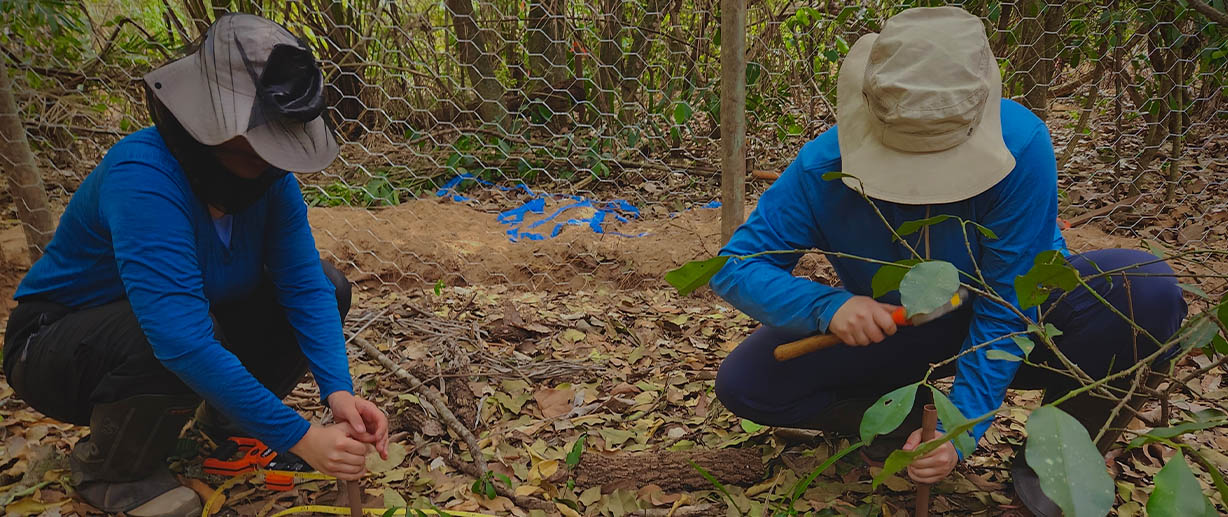By Daniel Brasington ’25
Katie Garner ’25 and Katie Stewart ’26 are ready to talk about jungle ecology. After spending part of the summer in the Brazilian Pantanal, they are eager to share what they discovered during the Student Research Presentations and Reception, 9:30-10:30 a.m., Saturday, Oct. 12, Great Oaks Hall in the Roger Milliken Science Center.
The event is free and open to the public, with a special invitation to families on campus for Family Weekend (Oct. 11-12).
Garner, an environmental studies major with a concentration in data science from Rock Hill, South Carolina, and Stewart, an environmental studies and psychology double major from Hartsville, South Carolina, conducted research in the world’s largest tropical wetland. They were given this opportunity and accompanied by Dr. Jennifer Bradham, an assistant professor of environmental studies and quantitative ecologist.
“The goal of this research is to quantify the impacts of large mammal herbivores on tropical forest structure and nutrient cycling in intact tropical forests,” says Bradham, who believes the Pantanal is the ideal place to conduct this type of research because it “consists of a mosaic of different forest habitats.”
This was Garner’s second summer traveling to Brazil with Bradham. This research experience expanded upon last summer’s research designed to lay the groundwork for future studies regarding herbivores and how their feeding habits and behaviors affect new plant growth.
“This was such an ambitious project, which made Dr. Bradham the perfect person for the job. Her enthusiasm and expertise were crucial for being able to accomplish our goals” says Garner.
Stewart was also thankful to have Bradham along as their research mentor and guide.
“Dr. Bradham is really good at being hands on and helping in the classroom as well as in the field. She is just a great teacher and advisor,” says Stewart.
According to Bradham, to accomplish their research goals and quantify the impact of large herbivore mammals on forest rejuvenation and nutrient cycling, the team created and used fenced and unfenced plot couplets to exclude mammals from certain parts of the landscape while allowing them full access to other parts.
“Motion-activated cameras helped us discern which large mammal species are visiting the area and how they are interacting with the forest,” says Bradham.
Once the research team returned to campus, they used the data collected to run a series of computer models. This was done to examine possible relationships between animal movement, canopy cover and plant growth.
“This project and research experience showed me what a career in environmental studies could look like and the opportunities that it could open,” says Stewart. “The experience made me excited about the future.”
To learn more about their research, visit the Student Research Presentations and Reception during Family Weekend, 9:30-10:30 am., Saturday, Oct. 12, Great Oaks Hall in the Roger Milliken Science Center.
For the complete Family Weekend schedule, visit Wofford.edu/familyweekend.
